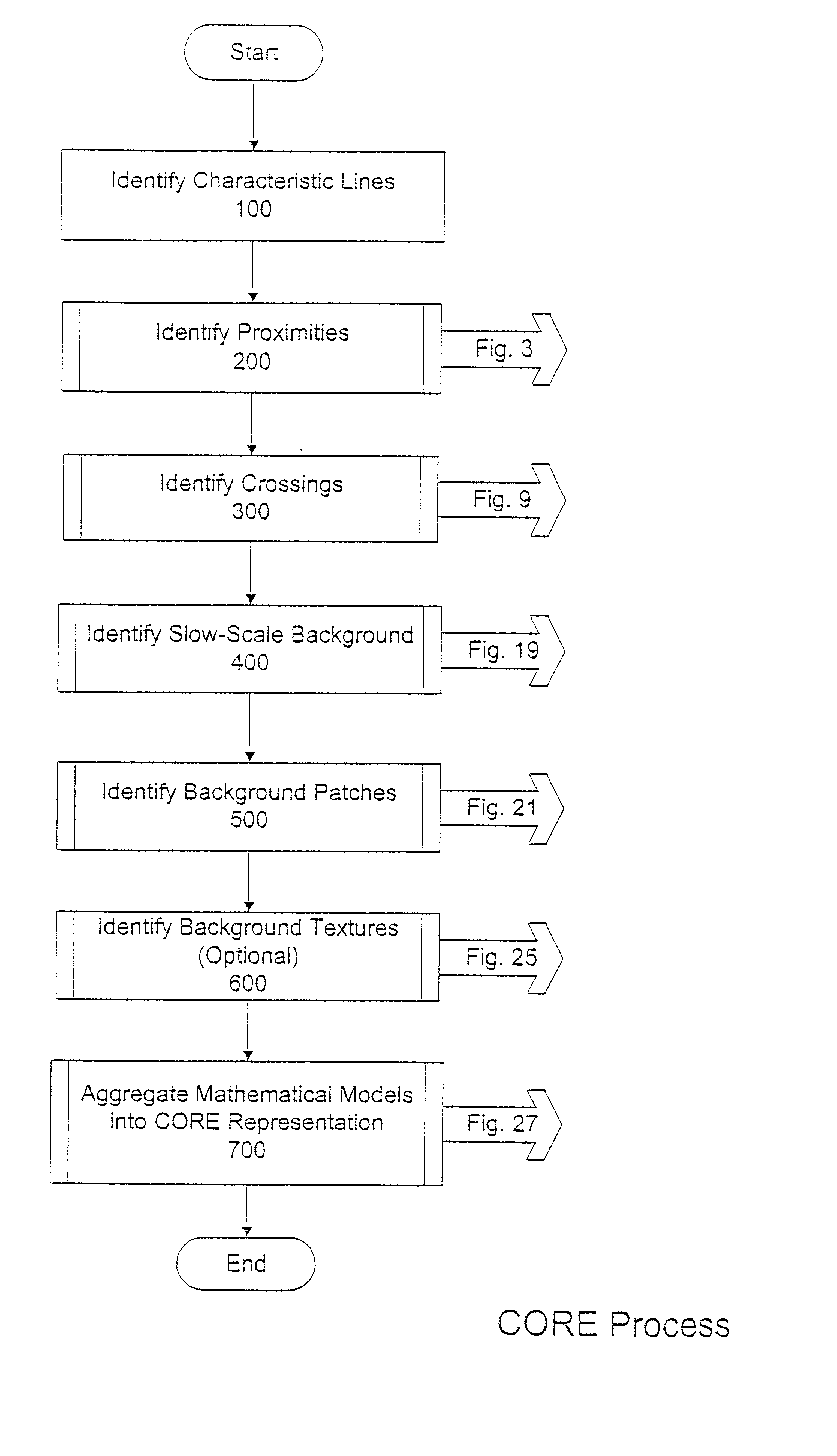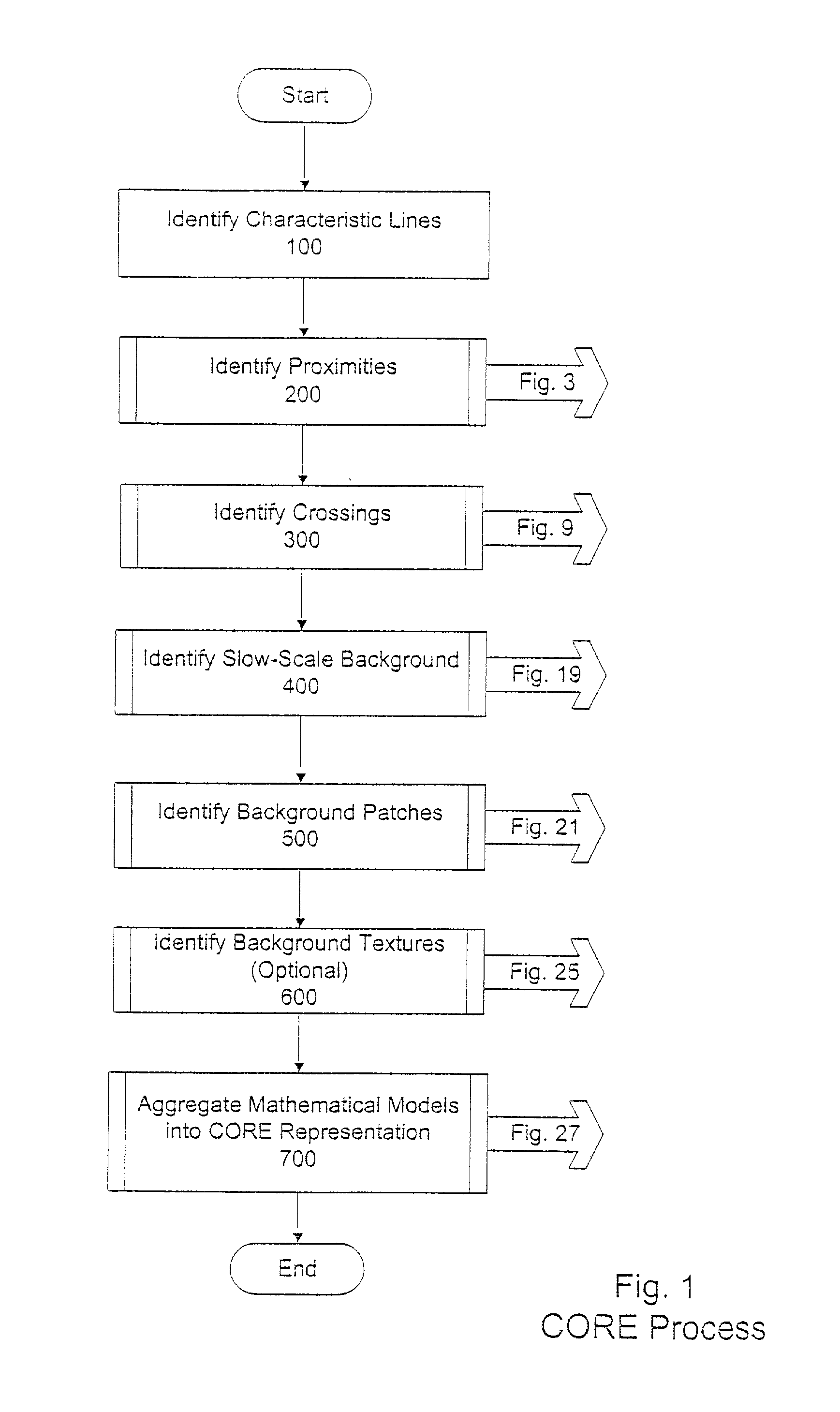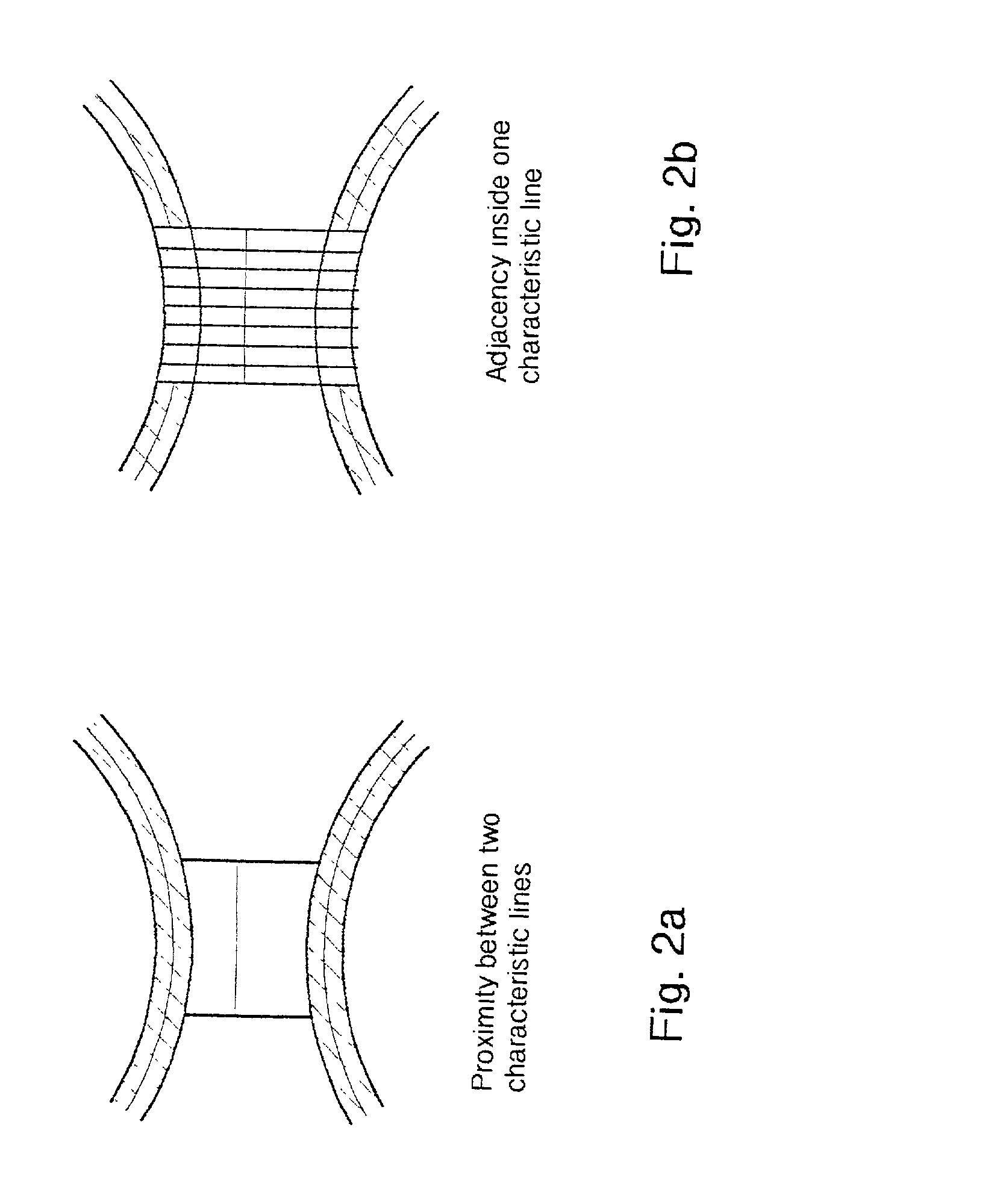Method and apparatus for image representation by geometric and brightness modeling
a technology of geometric and brightness modeling, applied in the field of image representation, can solve the problems of insufficient high resolution representation, inability to accurately represent high resolution, and inability to capture conventional vectorization methods, etc., and achieve the effect of simple visual interpretation
- Summary
- Abstract
- Description
- Claims
- Application Information
AI Technical Summary
Benefits of technology
Problems solved by technology
Method used
Image
Examples
Embodiment Construction
[0080] The present invention is a method and apparatus for representing digital images as mathematical models. In particular, the invention relates to using the identified characteristic lines and associated parameters of an image, including characteristic strips, signatures, cross-sections and transformations, as the basis for determining the content-oriented representation ("CORE") parameters, which transform the image into a globalized mathematical model. The CORE process includes identifying proximities and crossings of characteristic lines; identifying the background, including the slow-scale background, patches and textures; and aggregating the mathematical models derived from the image. A CORE represented image is accurately and efficiently reproducible based on these mathematical models.
[0081] Different types of images are processed according to the present invention, originating from different sources. Types of images include, for example, black and white and color images p...
PUM
 Login to View More
Login to View More Abstract
Description
Claims
Application Information
 Login to View More
Login to View More - R&D
- Intellectual Property
- Life Sciences
- Materials
- Tech Scout
- Unparalleled Data Quality
- Higher Quality Content
- 60% Fewer Hallucinations
Browse by: Latest US Patents, China's latest patents, Technical Efficacy Thesaurus, Application Domain, Technology Topic, Popular Technical Reports.
© 2025 PatSnap. All rights reserved.Legal|Privacy policy|Modern Slavery Act Transparency Statement|Sitemap|About US| Contact US: help@patsnap.com



